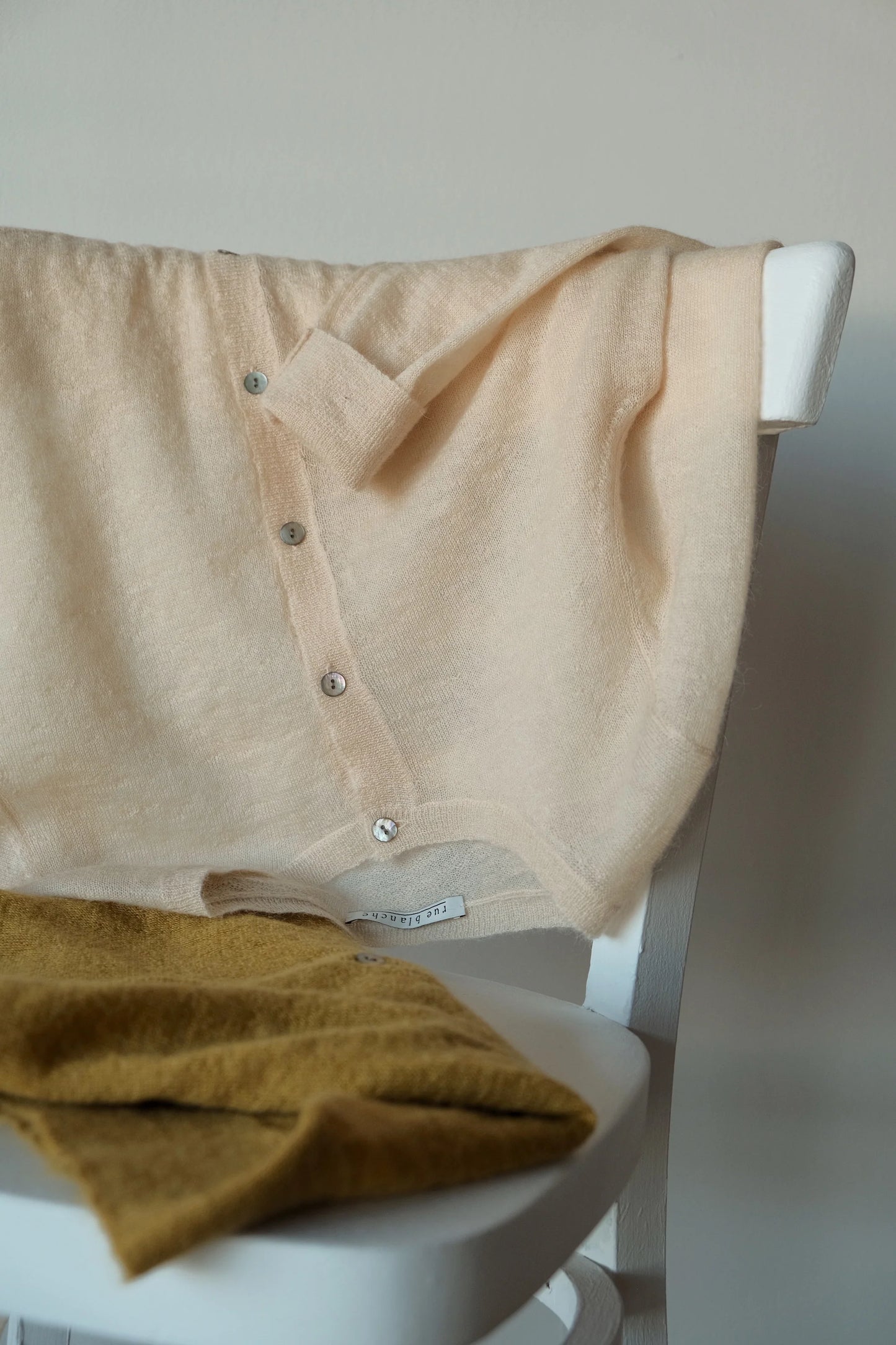

If over time you notice that your sweater is pilling, don't worry! this is a completely natural phenomenon that does not depend on the quality of your knitwear. Indeed, these pilling are natural and unavoidable and appear during washing and use. If pilling has appeared on your rue blanche knitwear, here is our little guide to limit and eliminate it, so that your knitwear will look as good as new!
- Why does good knitwear pill?
The knitted pieces simply reject some material, because they are alive. Any wool, even the highest quality, will tend to create pilling, especially in areas subject to friction, but why?
In fact, it's simple, within the knit of your jumper, there are some fibres that are shorter than others. The shorter fibres, as they rub against each other, come out, intertwine, and settle on the surface of the fabric, where they remain attached to it. But no need to panic, most of the time the pilling on your knitwear will gradually disappear. However, there are techniques to anticipate and limit it, so here they are.
- How can we anticipate and limit pilling?
First of all, in order to limit the pilling, it is necessary to limit friction, especially when washing. To do this, avoid overloading your machine, don’t wash your knitwear with your jeans and don't put your knitwear in the tumble dryer.
Moreover, remember to turn your knitwear inside out and place it in a net. To reduce pilling, choose a gentle wash with mild products. Chemical detergents weaken the threads, which can break and form new pilling.
But once again, don’t forget that pilling is totally natural and unavoidable, which means that despite these steps your knitwear will not escape its small pilling. If pilling disturbs you from an aesthetic point of view, here are our little tips to eliminate them without damaging your favourite knit.
- How to eliminate pilling?
There are many techniques for removing pilling from your knits, here are the most effective according to rue blanche.
The anti-pill mower
To remove pilling the safest technique is the use of an anti-pilling mower, these have a grid that will ensure optimum safety to don’t damage your knits with the blades. We advise you to use this technique, which remains efficient and fast.
The razor
You have probably already heard about the razor technique. Using a razor to remove the pilling is effective and will save you time.
Nevertheless, take precautions before using this technique so as not to damage your knits. Use a good quality blade, and make sure you shave from top to bottom, without pressing too hard and by tightening your knitwear well.
The fine-tooth comb
One of the other techniques is the use of a fine-tooth comb, such as a lice comb. Run your lice comb over the surface of your jumper from top to bottom, pulling slightly on your knitwear so that it stays taut and the teeth of the comb do not get caught in the mesh.
Scissors and tweezers
If your knitwear does not have a lot of pilling, you can cut your pilling with scissors carefully so as not to cut your knitwear. You can also remove the few pilling from your knitwear with tweezers by pulling the pilling out at once. These techniques are slower than the others, so we recommend that you use them to remove the 2 or 3 pilling that are bothering you.
CONCLUSION
From now on, you know where the pilling comes from, how to limit them and how to eliminate them, so you no longer have any reason to hate them. Also, remember that it is a natural phenomenon that is not synonymous with poor quality. You should also know that pilling, over time and washing, will become rare and eventually disappear!
